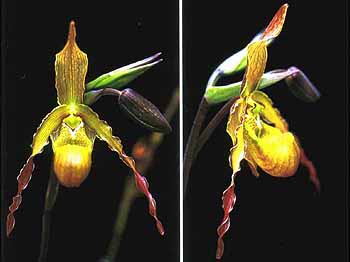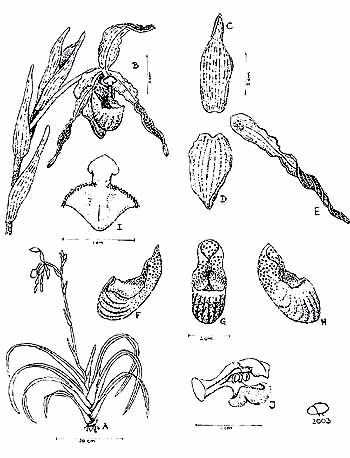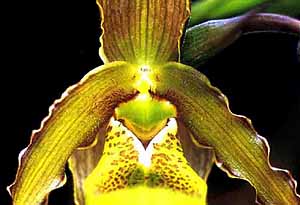|
A new Phragmipedium brasiliense
was described in Orchid Digest ,Oct.-Dec. 2003 by Robert-Jan
W. Quene & Olaf Gruss. I'll introduce it on my site here.
A NEW PHRAGMIPEDIUM BRASILIENSE, SPECIES OF THE SECTION
LORIFOLIA FROM BRAZIL
ROBERT-JAN W. QUENE AND OLAF GRUSS
Around 10 to 12 years ago, Jerry Fischer of Orchids Limited
received two unlabelied plants of the genus Phragmipedium from
Ron Ciesinski of Taylor Orchids, Michigan, They had been purchased
over 20 years earlier by John Fitch from Margaret Ilgenfritz,
who had originally imported them from Brazil. At first thought
to be plants of P. roez!ii, the plants also resembled
P. vittatum in some respects. They proved easier to cultivate,
and are both faster growing and easier to bloom than P. vittatum.
The flower is similar to P. vittaturn, the most prominent difference
being the intensive spotting. or maculation, on the pouch.
The two clones were crossed, and the resuting offspring indicate
that these are not natural hybrids. All the seedlings that have
bloomed thus far carry the same features as the parents, which
would be unlikely if one or both of the parents were a hybrid.
A comparison of the two clones, as well as two seedlings, with
a primary hybrid such as P. Arthur (P. !ongifolium x P. vittatum)
reveals clear morphological differences. This
natural hybrid grex could be possible in the wild, since both
P, vittatum and P. chapadense (better classified as a variant
of P. longifolium) are native to Brazil, although it is not clear
if they are sympatric. We first discussed the idea of describing
this p]ant as a variety of P. vitfattum, but now believe it is
sufficiently different from P. vittatum to merit species rank.
Phragmipedum brasiliense should prove to be an interesting species
for hybridization. resulting in vigorous multifloral hybrids
which bloom easily, with intenselv colored flowers.
|
031217


